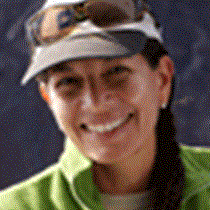Isabela Island
Isabela Island is the largest among the Galápagos Islands with a total land surface of about 4,500 square kilometers, and it is the only one created by the fusion of six enormous shield volcanoes, which give rise to the characteristic “seahorse” shape of the island.
The flora and fauna of the island are unique, and were under serious threat especially from the growing population of goats. For this reason, the island was the focus of one of the most successful programs in the ecological restoration of the islands: the eradication of feral goats and donkeys. Under The Isabela Project, one of the programs supported by Lindblad Expeditions-National Geographic guest donations, all goats and donkeys have been successfully removed, and now the island is well on the road to recovery.
This morning we visited Urbina Bay, an area on the western coast of Isabela, at the base of Alcedo Volcano. In 1954, one and one half square kilometers of the marine reef off the coast of Urbina Bay was uplifted almost instantaneously, by as much as 15 feet, leaving all marine creatures exposed to the sun and air. Huge coral heads are found in the inland trail, more than half a mile away from the existent shore. But Urbina bay not only shows an incredible geological formation but also a very healthy population of land iguanas and giant tortoises. Most of the young giant tortoises found here have been born under captivity at the breeding center on Isabela, under another very successful captive breeding program of these reptiles, managed by the Galápagos National Park; to save these prehistoric creatures from the face of extinction. Today we had the chance of counting 15 tortoises, few large males, some females and many young ones.
In the afternoon we went back north a few miles to visit the historic bay of Tagus Cove where some interesting historic graffiti can be found near the landing. After the discovery of the islands back in 1535, pirates, buccaneers and whalers have sought and found, in Tagus Cove, a sheltered harbor and easy access to the island. This area of Isabela was also one of the places that Charles Darwin visited in 1835, but unlike him, today we had the chance to explore this site not only by foot, hiking up the rim of a tuff cone overlooking Darwin Lake and beyond, but also snorkeling and with our kayaks and Zodiacs to encounter Galápagos penguins, flightless cormorants and many other fascinating things on the bay.




